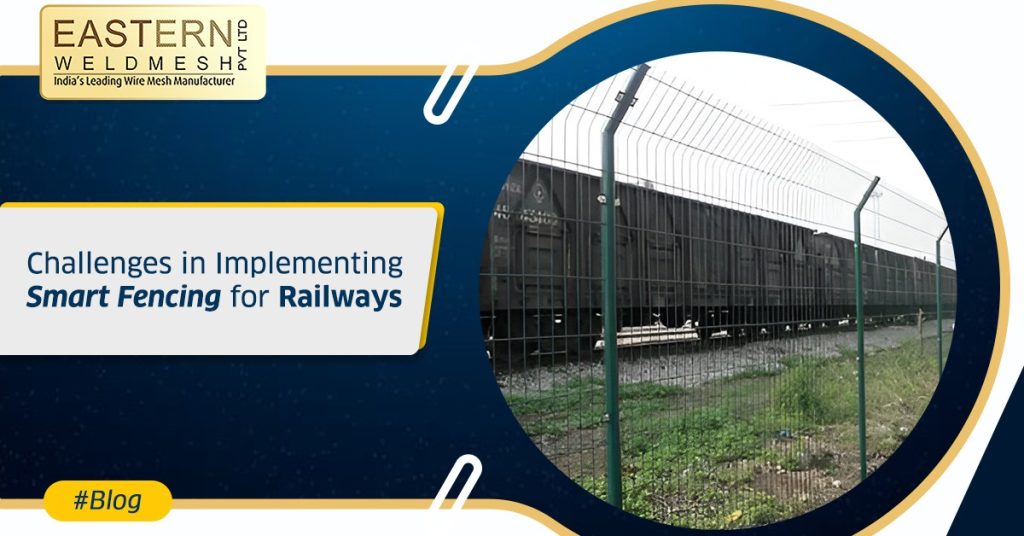Smart fencing is gradually becoming an essential solution in order to offer railway safety and
security. With technological integration such as sensors, cameras, and real-time monitoring,
smart fences can block unwanted intrusion, minimize accidents, and safeguard railway tracks.
Yet, with the technology as promising as this, its application in railway networks has not been
without a series of challenges. Let us consider some of the main issues, especially while
utilizing smart fencing solutions such as welded wire mesh fence in Kolkata or welded wire
mesh fence in India.
Installation and Maintenance Costs
The first issue is the installation cost of smart fencing. Not only does installing a welded wire
mesh fence in Kolkata cost the price of the fence, but also the advanced machinery to manage
shrewdly.
Cameras, sensors, and systems of live monitoring are quite costly. Moreover, these systems
need regular updating of software, replacement of hardware, and maintenance, which ends up
costing a lot in the long run.
Vandalism and Tampering
Smart fences are not tamper-resistant. Welding or sabotaging the welded wire mesh fence in
India interfering with the technology is always feasible, and this weakens the effectiveness of
the system.
Using sensors and cameras exposes the fence to sabotage, and this results in false alarms or
security breaches going unnoticed. Maintaining the integrity of the security of the system from
tampering is an ongoing challenge.
Integration with Existing Systems
Railway infrastructure is inclined to use older, legacy technology, and it is hard to incorporate
smart fencing within such established systems.
Either wiring up new sensors into existing monitoring systems or changing the fence in order to
connect with the existing security infrastructure, integration takes much time and effort. This
makes installation and more expensive than merely installing new technology.
Environmental Factors
Railway systems cover vast expanses of land, some of which are in difficult terrain. Harsh
weather, animal interference, and severe terrain can affect the operation of smart fences.
Rain, snow, or severe temperatures can damage sensors and cameras, and animals can
disrupt the system. This would result in higher maintenance and repair, resulting in higher
operating costs.
Technological Limitations
Despite the progress in smart fences, the technology is not infallible. Sensor, camera, or
monitoring unit failure can lead to false alarms or security breaches that go unnoticed.
To make the system reliable, updating and maintenance of the system must be done
periodically, requiring much time and resources, especially when extended to vast railway
networks.
Training Personnel
Intelligent fences need more than just installation—they also need skilled hands to manage the
system. Railway personnel need to be trained to use the system, react to alarms, and maintain
the system.
Recruitment and retention of experts, particularly for operating technology from Indian stainless-
steel wire mesh manufacturers, are some of the other issues.
Conclusion
Smart fencing is one such promising concept to improve the security of railroads, but it goes
hand in hand with some significant challenges. Because of the huge cost incurred during
installation and periodic maintenance, along with environmental concerns, this process
becomes problematic. But if planned carefully and implemented after coordination with genuine
stainless-steel wire mesh dealers and technology support providers, these problems can be
avoided and railways can be made safer and more secure in the long term.
For reliable quality, competitive pricing, and quality service, Eastern Weldmesh proves to be the top choice for wire mesh in Kolkata.


